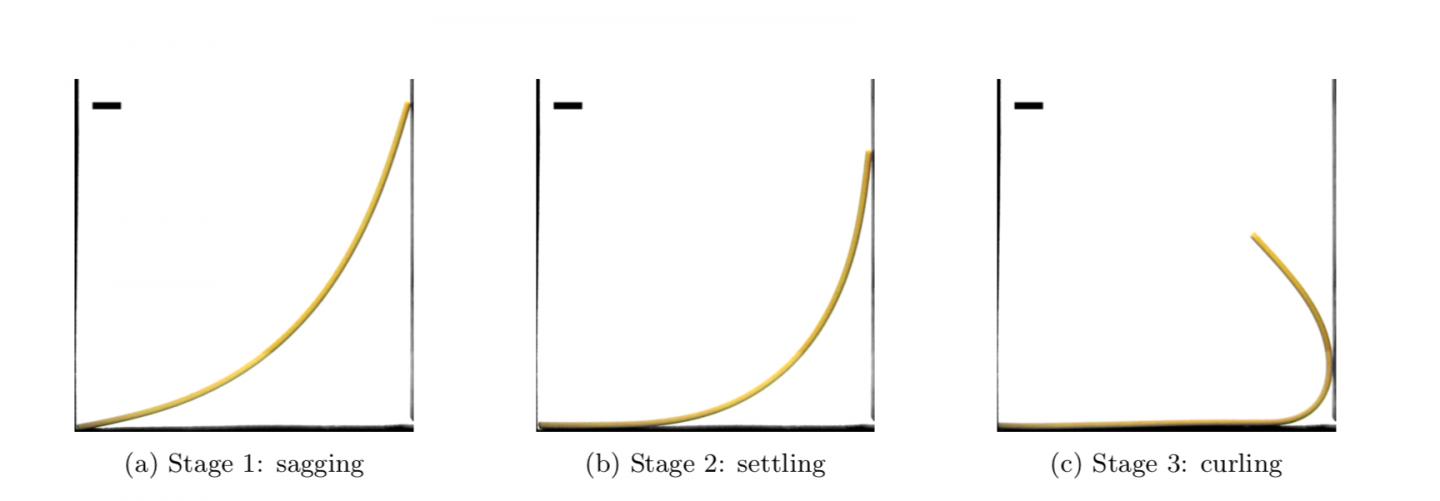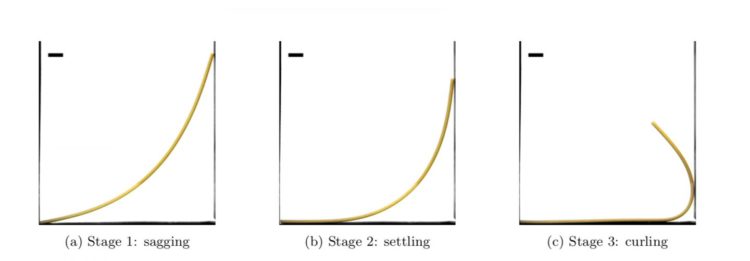How noodles’ mechanical properties control the way they soften

Credit: APS Journals
January 2, 2020 – Boiling water turns spaghetti from brittle, inedible rods to soft, delectable pasta. A new study models the mechanics behind how noodles deform when they cook. Researchers from the University of California, Berkeley, identified three states during a spaghetti strand’s evolution: sagging, settling, and curling. When placed in a pot of boiling water, a spaghetti strand will first sag and then settle on the pot’s bottom before finally curving in on itself. By incorporating these properties into their model, Goldberg and O’Reilly were able to accurately replicate the behavior of a noodle. They then tested this model against a single spaghetti strand soaked for two hours in a pot of room-temperature water. The results validated the model’s ability to predict the mechanical behavior of the pasta’s core — potentially valuable knowledge for the food production industry and food science community. Future research could examine the deformation of rigatoni or lasagna, the authors suggest.
###
Mechanics-based model for the cooking-induced deformation of spaghetti
Nathaniel N. Goldberg and Oliver M. O’Reilly*
*[email protected]
Media Contact
APS Press Office
[email protected]
301-209-3090
Related Journal Article
http://dx.





